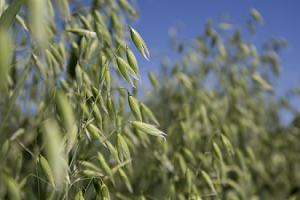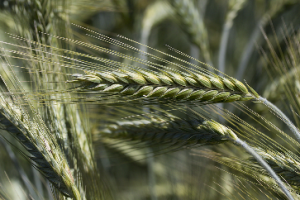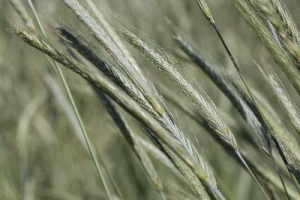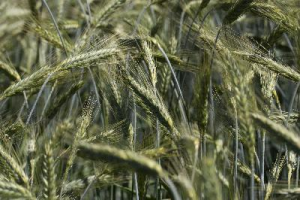During the winter months in Florida, cereal grains can be an alternative feed source for your livestock. However, climate and weather conditions can decide if establishing cereal grains will be beneficial or not. Factors to consider before planting are:
- Fertility, moisture-holding capacity, temperature, and moisture content of the soil
- Depth to the water table
- Size and germination of the seed
- Plant size and growth habit
- Growing season and water requirements of the crop
- Habits of insects, disease, and other pests
Oat

*Most cold sensitive of the small grains but very palatable
*Can be used for grazing, hay, or silage
*May be planted earlier than other grains; plant between Nov. 15 – Dec. 15 at 64 – 80 lbs/acre
*Recommended varieties: Legend 567 (currently crown rust resistant), Horizon 720 (moderately resistant to crown rust), Horizon 306, Horizon 270 (crown rust susceptible), and RAMLA 99016 (moderately crown rust susceptible)
Wheat

*Similar to oats in forage yield, but less susceptible to cold injury
*Should only plant varieties that are resistant to Hessian fly
*May provide more forage later into the spring compared to oats or rye
*Can be used for grazing, hay, or silage
*Plant between Nov. 15 – Dec. 15 at 75 – 90 lbs/acre
*Recommended varieties: AGS 2024, AGS GrazeAll (AGS 2027), AGS 2033, AGS 2038, Dyna-Gro Savoy, Pioneer 26R10, Pioneer 26R41, and Pioneer 26R94
Rye

*Most dependable cereal grain, but poor grain producer
*Greater cold tolerance, quicker growth at low temperatures, and more uniform forage production
*Primarily used as a forage crop, but is also planted as wind break for row crops and cover crop
*Low leaf-to-stem ratio (not for hay or silage)
*Extensive fibrous root system and can grow in sandy, acidic soils
*Less damage from fungal leaf disease and highly resistant to Hessian fly
*Plant between Dec. 1 – Dec. 31 at 35 – 84 lbs/acre
*Recommended varieties: FL 401 (for early grazing or use in blends), FL 104 (seed availability may be limited, full season grazing)
Triticale

*”Newer” crop; forage quality of wheat and the excellent disease resistance of rye
*Good forage and grain potential for Southern USA
*Does not respond well to close grazing; recommended for haylage or silage if grown alone
*For grazing, consider blending with ryegrass to promote a longer growing season
*Plant between Oct. 15 – Nov. 15 at 84 – 112 lbs/acre
*Recommended varieties: Trical 342, Monarch, and NF 201
For more information on Cereal Grains for Florida, please click here.
 0
0
